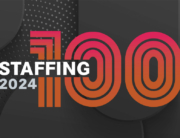More than two-thirds of current and prospective buyers see you as a necessary evil. Some hiring managers and HR directors use stronger language, calling recruiters “scum sucking pig dogs” or admitting they engage staffing firms only for “problematic use” (these quotes are not manufactured).
How is it that an industry that impacts the most important asset of companies, their people, and one of the most important aspects of people’s lives, their jobs and careers, isn’t held in higher regard? Given this impact, why aren’t staffing and recruiting professionals viewed as the invaluable assets they are? The why doesn’t matter.
The problem is clear — the true value of staffing isn’t fully understood, appreciated, and acknowledged by most people.
For those reading this who have been awarded industry honors, such as Staffing Industry Analysts’ Best Staffing Firms to Work For and Inavero’s Best of Staffing, you may think this doesn’t apply to you. While it’s possible that’s true in regard to your raving fans who give you high marks, what about those who aren’t buying at all or as often as good at what they do, why is it that more than 95 percent of companies buy staffing at some point in time over a decade yet only 25 percent do so each year?
If you want something different, you must do something different. One sure- fire way to go from great to good or good to poor is to keep doing things the way they’ve always been done.
To do something different and be seen by more people as a valuable asset, here are the first four steps:
- Get not only what they need, but what you’ve been missing. I’ve yet to find the company whose sales team, recruiters and leaders couldn’t do even better at understanding clients and candidates. Enhanced best practices that improve questions, create collaborative dialogues, and deepen comprehension of their needs and your value are winning over even the most they could? Why are so many of these award winners facing similar struggles as everyone else when it comes to the jaded and doubtful of people. Prospects, customers and candidates who are engaged in collaborative dialogues opening of doors, hearts and minds of buyers? If the best of the best are that report significantly higher levels of satisfaction with our industry.
- Gather what they need before they need it. Most buyers, when ready to buy, need people now. Yet, they often have to wait while we go find available talent. In this iTunes and Amazon.com “download it now” society of ours, continuing to make buyers wait will only perpetuate our necessary evil status. The companies I work with that are employing innovative practices to have more of who clients need the moment they need are grabbing market share from competitors and creating market share by getting more of the 95 percent buying every year.
- Give escalating value for an escalating investment, without escalating labor and costs. Rather than giving away too much for too little, giving people choices differentiates your value while giving them more than one way to buy. This shifts the conversation from “do you want to buy” to “which choice you will buy.” This one innovation is transforming companies to having higher margins, lower labor intensity and deeper diversification in the market.
- Glean the impact you’re having — then, deepen it. Do great work, then make the work greater is the mantra for anyone wanting to win over more clients and candidates forever. This requires continually adding value without increasing your burden, innovating without complicating, and evolving your offerings as the markets evolve. Ongoing dialogues and provocative questions, as in the first step, provide the inputs to improve your outputs. Case in point, one of the leading privately held national companies is experiencing its highest customer and candidate retention rates in its history. Its CEO, for whom I serve as an advisor, attributes this success to the company’s focus of doing great work, then finding ways to make that work of even greater benefit to their clients and candidates.
One you’ve completed the first four steps, here are three follow-up actions you can take:
- Buy from your own company. Without spending a dime, you can act like a buyer of your firm’s services. Watch closely how your salespeople sell and recruiters recruit and then ask yourself: “Would I want to be sold to like that?” Most leaders, when they set aside their natural bias, openly admit that the experience delivered by many on their team is lackluster. Leaders who guide their teams to create buying experiences that even they themselves would want to be a part of are creating the most profitable and sustainable companies.
- Practice attractive persistence. Showing up isn’t half the battle; it’s where the war is actually lost or won. One of the chief complaints about staffing is poor follow-through by the people in our business, and this starts with the sales and marketing effort. Showing up doesn’t always have to be about a sales pitch or taking an order. Every contact, even as often as a few times a week, is an opportunity to deliver value, such as market intelligence, invitations, competitive information, and best practice updates.
- Remember that email is not a form of communication. It’s difficult, if not impossible, to form and deepen a relationship build on trust when all you have to go on are words on a page. Email is a one-sided, time-delayed monologue that allows too much room for misinterpretation, misunderstanding, and miscommunication. Email strips away not only the tone, and too often the context, from the message, but it also removes the very essence of efficient and effective human conversation.
Is email bad? Of course not; it’s just poorly used by too many people. We can all breathe new life into relationships by simply picking up the phone or meeting with someone for a brief dialogue. Email is best left for transmitting a contract or proposal, or sending one to two sentences, at most, to schedule a meeting or confirm a time for a call.







